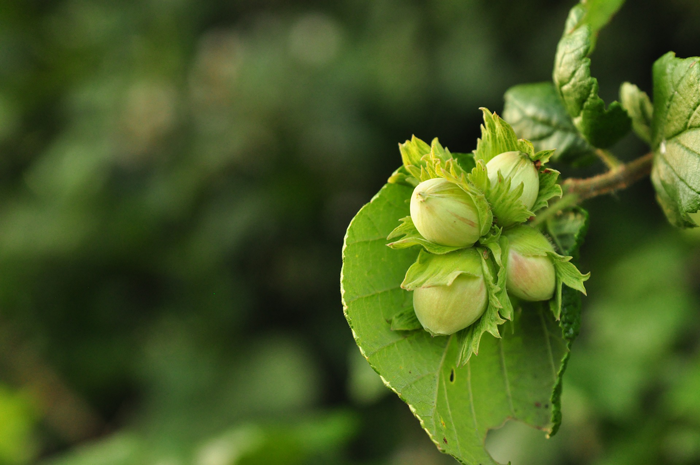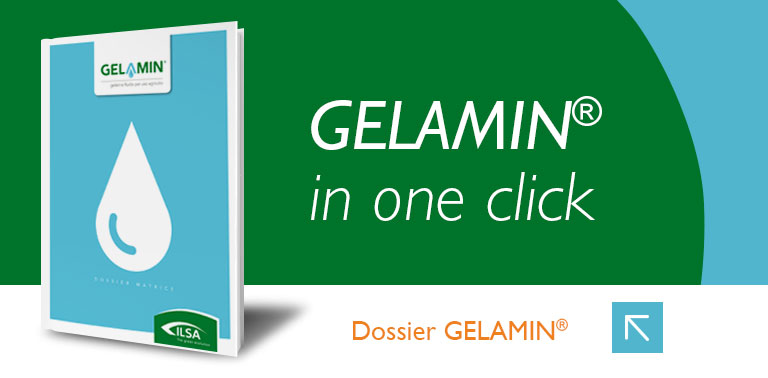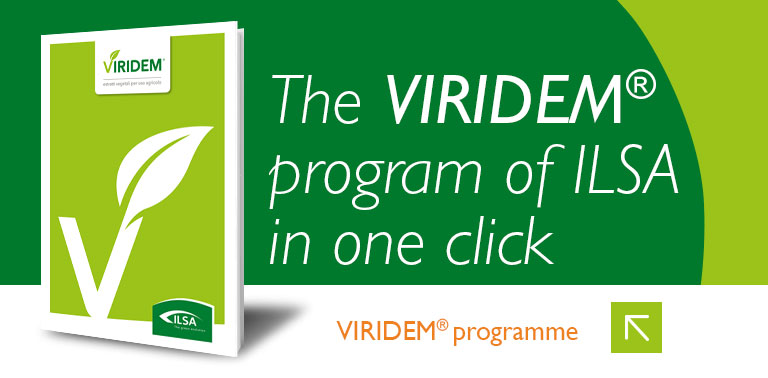Editorials
Hazelnut tree: the ILSA strategy for yield and quality
04/07/2019
In recent years, the areas dedicated to hazelnut tree cultivation are becoming established and expanding not only in traditional regions such as Piedmont and Lazio, but also in new areas such as Veneto, Tuscany and Umbria There are many farmers in fact who concentrate on hazelnuts as a profitable and sustainable alternative to traditional cereal, fruit and wine production, relying on the high demand for raw material from the confectionery industry.
Hazelnuts in fact appear to be associated with some of the most famous Italian brands in the world. In addition, from an agronomic point of view, the hazelnut tree is a hardy plant which adapts well to almost all soils and requires limited labour compared with other crops, such as the vine, as many cultivation practices can be mechanised. This is, however, a crop that cannot be improvised.

In order to achieve adequate levels of quality, yield and income, technical skills and the use of innovative technologies are needed. Among the various technical choices to be made, that of an adequate nutrition plan is fundamental. Among the different fertilisers available, the use of organic fertilisers with modulated release such as those based on Agrogel®, liquid fertilisers based on amino acids for leaf and root application based on Gelamin® and bio-stimulants of natural origin, developed within the ILSA Viridem® program, allow to increase the efficiency of nutrition and to boost the quality and quantity of the production whilst respecting the environment.
PREPARING THE SOIL FOR PLANTING THE HAZELNUT GROVE
In order to achieve optimal levels of quality and productivity throughout the crop cycle, it is essential to start with a proper soil preparation and basal dressing. To start on the right foot, first of all, a complete soil analysis must be carried out, on the basis of which the basal dressing and any corrections to be made must be decided. The parameters to which particular attention should be paid, for planting the hazelnut grove, are:
- physical characteristics of the soil: loamy, loose and permeable soils are preferable;
- pH: a pH between 5.5 and 7.5 is optimal to favour the development of the microorganisms of the rhizosphere and to favour the availability of the mineral elements;
- active limestone: less than 8%, in fact, if it falls within certain values it has a positive effect on plant nutrition and mineralisation. An excess inhibits the absorption of certain elements such as iron, phosphorus, manganese and boron;
- organic matter content: soils with contents of less than 2% may be a problem as there are negative effects on the structure of the soil and erosion and compaction phenomena can be accentuated.
In the case of land with sub-optimal soil conditions, ILSA products, thanks to their unique raw materials and production processes, represent a valid support for solving critical issues and for the optimal development of the crop:
| Critical issues | Product | Dose | Suggestion |
|---|---|---|---|
| Low organic matter content | ILSALIFE compost-based soil improver with a high content of humidified organic matter. |
10-15 q/ha | Application to be carried out before the soil preparation and to be repeated during the growing phase until an optimal content of organic matter in the soil is reached. Whilst the crop is growing, we recommend distributing it onto the soil before tilling between the rows, in order to facilitate its interment. |
| Sub-alkaline pH, active limestone content and sub-optimal soil structure | FERTORGANICO cmodulated release organic fertiliser containing 100% AGROGEL® with pH 4.5. SFEROSOL micronized sulphur-based nutritional supplement. |
4-5 q/ha 1.5-3 q/ha |
Improvement of the physical, chemical and microbiological fertility of the soil. |
THE PLANTING PHASE: STRESS MANAGEMENT FOR A RAPID PLANT SELF-SUFFICIENCY
During the planting phase, it is essential to manage the post-transplant stress phase in the best possible way in order that the plant is in the best condition to acclimate, develop the root system as quickly as possible and begin to absorb water and nutrients from the soil.
ILSA’s strategy envisages:
| Phase | Product | Dose | Objective |
|---|---|---|---|
| In the hole before planting | ILSACTIGREEN START NP 9.18 solid organic fertiliser with a co-formulant from enzymatic hydrolysis with verified bio-stimulant activity, also containing high bioavailability phosphorus. |
100 g/hole | To provide nutrients readily available for uptake by the plant and to stimulate root development. |
| With water distributed immediately after transplantation in order that the soil adheres to the root | ILSARODDER product with specific action able to favour the growth of the roots, containing: organic nitrogen from amino acids, phosphorus from ammonium polyphosphate and humic extracts. |
2% | To stimulate prompt rooting and increase the root's ability to absorb water and nutrients from the soil. |
FERTILISATION OF THE HAZELNUT GROVE: FROM PLANTING TO FULL PRODUCTION
The cultivation phase, which can last up to 7-8 years, is a very important phase as it is during this phase that the type of cultivation is set up, which will then allow the plant to reach an optimal balance between growth and production and to carry out some cultivation operations mechanically, obtaining satisfactory quantitative and qualitative yields and reducing production costs.
During the cultivation phase, nitrogen supplies must be located near the roots and must be reduced compared with the quantity during full production, to avoid excessive vigour. For the first year, compared with the quantities used during full production, we recommend a reduction of 60% in nitrogen intake, of 70% for phosphorus and of 80% for potassium.
ILSA's advice for the first year of cultivation is:
| Phase | Product | Dose | Objective |
|---|---|---|---|
| Before weeding the row | FERTORGANICO organic nitrogen fertiliser from AGROGEL® with modulated release. |
1.5-2.5 q/ha | To favour a balanced vegetative development by nourishing the plant according to its requests, increasing the fertility of the soil. |
| After the summer always before weeding | BIOFRUTTETO KS organic-mineral fertiliser NPK 5-10-15 based on AGROGEL® containing 13% sulphur and 13% calcium. |
1-2 q/ha | To help the plant accumulate the right reserves to face the winter and to encourage a prompt restart in spring. |
From the second year until the hazelnut grove comes into production, we recommend supplying 50% of the nitrogen, phosphorus and potassium required during the full production phase.
The products and quantities recommended by ILSA are therefore:
| Phase | Product | Dose | Objective |
|---|---|---|---|
| Before weeding the row | GENTILE organic-mineral fertiliser NPK 12-5-5 based on AGROGEL®, with 5% sulphur and 0.01% zinc. |
2-3 q/ha | To provide a balanced and complete nutrition to the hazelnut tree according to its requirements, while increasing soil fertility. |
| After the summer always before weeding | BIOFRUTTETO KS organic-mineral fertiliser NPK 5-10-15 based on AGROGEL® containing 13% sulphur and 13% calcium. |
1-2 q/ha | To help the plant accumulate the right reserves to face the winter and to encourage a prompt restart in spring. |
From the third year onwards, in some systems the hazelnut production begins to have a certain economic interest and with this it is therefore necessary to begin using defence products and therefore to think of starting to provide a complete nutrition program in which leaf fertilisers and bio-stimulants are also combined. Obviously, since the hazelnuts are not yet in full production, it is necessary to reduce the recommended doses, especially for solid fertilisers to be distributed at the foot of the plant.
The ILSA hazelnut nutrition programme for this phase envisages:
| Phase | Product | Dose | Objective |
|---|---|---|---|
| During the post fruit set phase, localised on the row | GENTILE organic-mineral fertiliser NPK 12-5-5 with 5% sulphur and 0.01% zinc |
2-3 q/ha | To nourish the plant in a complete and balanced way and to favour an optimal development of the hazelnuts, at the same time increasing the fertility of the soil. |
| During the post fruit set phase, by leaf route | ILSAMIN MMZ amino acid-based leaf fertiliser with magnesium, manganese and zinc complexes |
2-3 applications at a dose of 2-3 kg/ha |
To favour an optimal development of the plant and to avoid possible deficiencies and micro deficiencies during the very delicate phase when the fruit begins to develop which could lead to fruit drop. |
| During the hazelnut development, by leaf route | ILSAMIN CALCIO based leaf fertiliser complexed with amino acids |
2-3 applications at a dose of 2-3 kg/ha |
To favour an optimal development of the fruit and its enlargement |
| In autumn after harvesting, by leaf route | ILSAMIN BORO leaf fertiliser based on amino acids in levorotatory form and boron ethanolamine. ILSAMIN MMZ amino acid-based leaf fertiliser with magnesium, manganese and zinc complexes. |
1 application a 3 kg/ha 1 application a 5 kg/ha |
To accumulate boron and trace elements in plant tissues in order to promote pollen and ovary fertility and to avoid possible deficiencies. |
| In autumn after harvest, localised on the row | BIOFRUTTETO KS organic-mineral fertiliser NPK 5-10-15 based on AGROGEL® containing 13% sulphur and 13% calcium. |
1,5-2 q/ha | To regenerate the reserves of nutrients in the plant and in the soil in order for the plant to face the winter at its best, to promote an optimal flowering and a prompt restart in the spring |
FERTILISATION MANAGEMENT OF THE HAZELNUT GROVE DURING FULL PRODUCTION
From the seventh to the eighth year after planting, the hazelnut tree gradually reaches full production and controlling spontaneous grassing replaces the cultivation practices used until now. It is therefore essential to manage the soil properly; this must take into account certain aspects such as: improving nutrient efficiency, reducing erosion, runoff and leaching losses, keeping the soil in good structural condition to facilitate the penetration of rainwater and any water supplied by irrigation and to preserve the organic matter content.
To ensure optimal quality and yield levels, it is essential to integrate the use of solid fertilisers to be distributed on the ground with the use of fertilisers and bio-stimulants to be applied by leaf and, for equipped farms, the use of fertilisers to be distributed by fertigation. The use of the various techniques aims to provide the plant with different nutrients when they are needed, where they are needed and through the route which allows the easiest absorption.
The ILSA hazelnut nutrition programme in production includes:
| Phase | Product | Dose | Objective | |
|---|---|---|---|---|
| During the post fruit set phase, localised on the row | GENTILE organic-mineral fertiliser NPK 12-5-5 based on Agrogel, with 5% sulphur and 0.01% zinc. |
3-4 q/ha | To nourish the plant in a complete and balanced way and to favour an optimal development of the hazelnuts, at the same time increasing the fertility of the soil. | |
| During the post fruit set phase, by leaf route |
amino acid-based leaf fertiliser with magnesium, manganese and zinc complexes. |
2-3 applications at a dose of 2-3 kg/ha |
To favour an optimal development of the plant and to avoid possible deficiencies and micro deficiencies during the very delicate phase when the fruit begins to develop which could lead to fruit drop. | |
|
During the hazelnut development, by leaf route |
ILSAMIN CALCIO calcium-based leaf fertiliser complexed with amino acids. ILSAC-ON bio-stimulant based on Fabaceae enzymatic hydrolysate. |
2-3 applications at a dose of 2-3 kg/ha 2-3 applications at a dose of 2 kg/ha |
To favour an optimal development of the fruit and its enlargement, to help the plant to have an optimal productive vegetative balance and to cope with any possible stress. |
|
| In autumn after harvesting, by leaf route | ILSAMIN BORO leaf fertiliser based on amino acids in levorotatory form and boron ethanolamine. ILSAMIN MMZ amino acid-based leaf fertiliser with magnesium, manganese and zinc complexes. |
1 application at 3 kg/ha 1 application at 5 kg/ha |
To accumulate boron and trace elements in the plant tissues in order to promote pollen and ovary fertility and to avoid possible deficiencies during flowering and during vegetative regrowth. |
|
| In autumn after harvest, localised on the row | BIOFRUTTETO KS organic-mineral fertiliser NPK 5-10-15 based on AGROGEL® containing 13% sulphur and 13% calcium. |
3-4 q/ha | To regenerate the reserves of nutrients in the plant and in the soil in order for the plant to face the winter at its best and to promote an optimal flowering and a prompt restart in the spring. |
All the details concerning our fertilisers, nutritional specialties and bio-stimulants mentioned in the article are available on the website www.ilsagroup.com in the PRODUCTS section.
By consulting the website, you will also be able to discover the full range of ILSA products and by registering, to receive in-depth technical documentation.





.png)
















